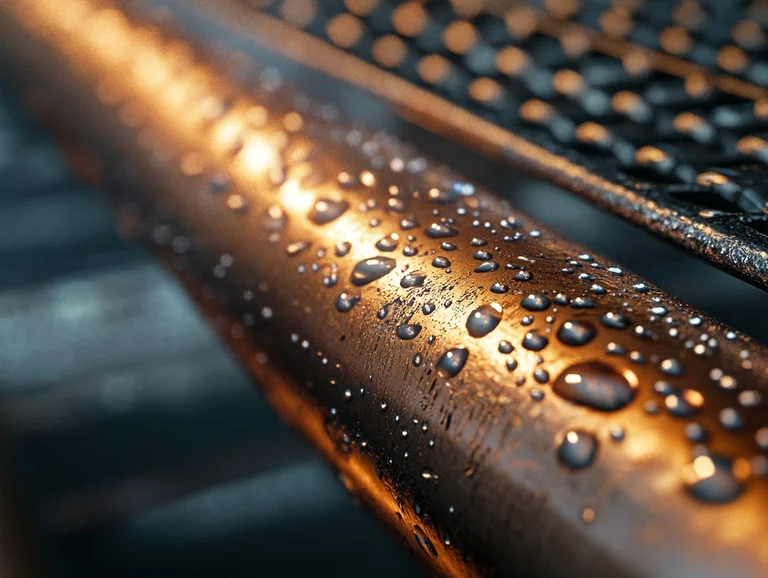- Basic Concepts
What Is Subcooling?
Subcooling is one of the most important parameters indicating the efficiency and health of a refrigeration system. Discover why subcooling should be on every technician's checklist, from preventing flash gas formation to increasing system capacity.
Cooling Maestro
Co-Founder

What is Subcooling? Why is it Vital in Refrigeration Systems?
Everyone knows the basic components of the refrigeration cycle: compressor, condenser, expansion valve, and evaporator. However, there is a critical parameter that establishes the delicate balance between these components and whispers to us how efficiently the system is operating: Subcooling.
Although often overlooked, properly understanding and managing subcooling value is the foundation for:
- optimizing system performance,
- preventing breakdowns,
- and reducing energy costs.
What is Subcooling?
In its simplest definition, subcooling is the cooling of liquid refrigerant below its saturation (boiling) temperature at the existing pressure.
Example Explanation
Water boils at 100°C at sea level. If you cool water at 100°C down to 90°C, you have subcooled it by 10°C. The same logic applies in refrigeration systems.
Formula: Subcooling (K) = Saturation Temperature (°C) - Actual Liquid Line Temperature (°C)
To measure subcooling, you need:
- Liquid line pressure (with a gauge)
- Actual temperature (with a thermometer)
- And a P-T chart (or digital app)
The Two Vital Functions of Subcooling
1. Preventing Flash Gas (Most Critical Benefit)
The liquid leaving the condenser experiences two types of pressure losses before reaching the expansion valve:
- Friction Loss: Due to friction inside the pipes
- Static Head Loss: If the evaporator is above the condenser
If the liquid has no subcooling, these losses will cause it to boil in the pipe → flash gas forms.
Harmful effects of flash gas
- Reduces expansion valve capacity
- Decreases refrigerant flow to the evaporator
- Reduces cooling capacity
- Causes unstable system operation
Subcooling gives the refrigerant the ability to tolerate these losses. For example, 5 K of subcooling allows the system to tolerate a pressure drop equivalent to 5 K.
2. Increasing System Efficiency
The refrigerating effect that occurs in the evaporator is the refrigerant absorbing heat from the environment as it vaporizes. A liquid entering the evaporator with lower enthalpy absorbs more heat → higher efficiency.
In short: Each °C of subcooling → gives you “free” cooling capacity.
How is Subcooling Achieved?
1. Subcooling in the Condenser
- Most common method
- The last section of the condenser further cools the liquid
- Condenser size and air/water flow rate are influential
2. Liquid-Suction Line Heat Exchanger
- Cold gas from the suction line cools the liquid line
- Provides both subcooling and protects the compressor from liquid slugging
3. Mechanical Subcooling
- A separate small cycle is used in industrial systems
- Actively cools the main liquid line
What is the Ideal Subcooling Value?
| Condition | Description |
|---|---|
| 5 K - 10 K | Ideal range (for most commercial systems) |
| < 3 K | Insufficient charge or condenser inefficiency |
| > 12 K | Overcharge (liquid accumulation in condenser, high discharge pressure) |
Conclusion
Subcooling is like taking the pulse of a refrigeration system.
It provides critical information about:
- Charge status
- Condenser performance
- Expansion valve health
On your next service call, use not just a gauge, but also a thermometer. Really listen to what the system is telling you.
Let's Design the Perfect Solution for Your Project Together
Let us analyze your needs to design and implement a custom, energy-efficient, and durable refrigeration system for you. Contact us to meet our expert team and get a personalized quote for your project.
Customer Satisfaction
For us, success is more than just a delivered project; it's a long-term, trust-based partnership fortified by our after-sales support.
Field Experience
With over 15 years of industry experience, we craft the most precise and efficient solutions for every detail of your project.
Sustainability
Boost your business's profitability and competitive edge through our focus on Eco-Friendly and Energy-Efficient manufacturing.